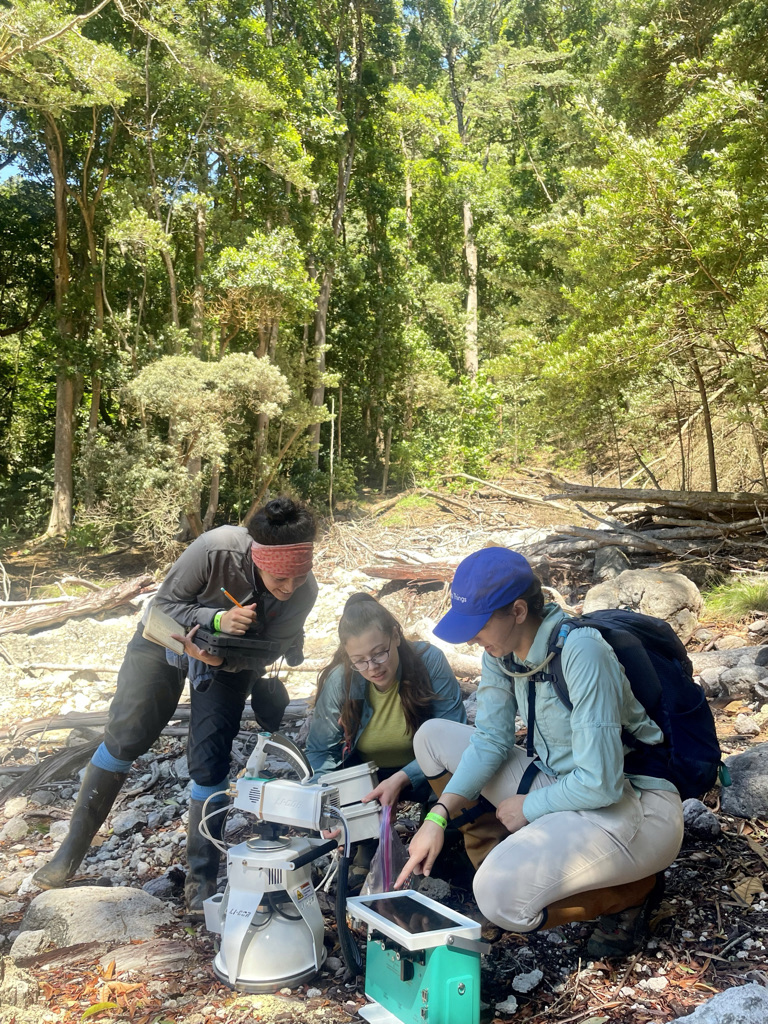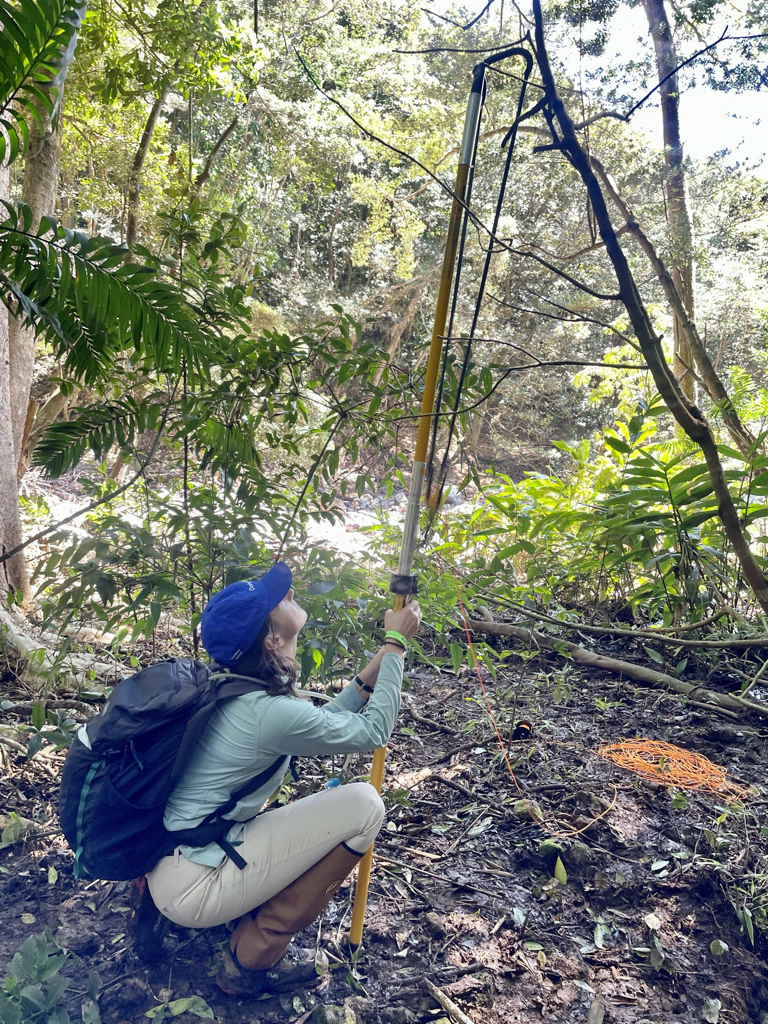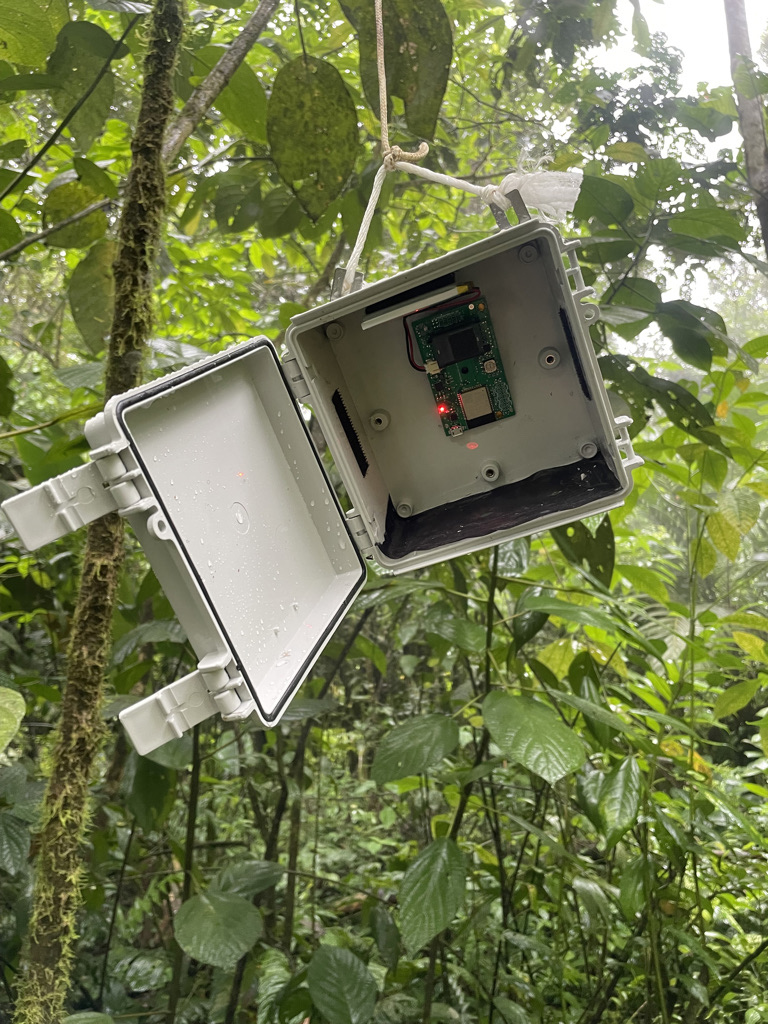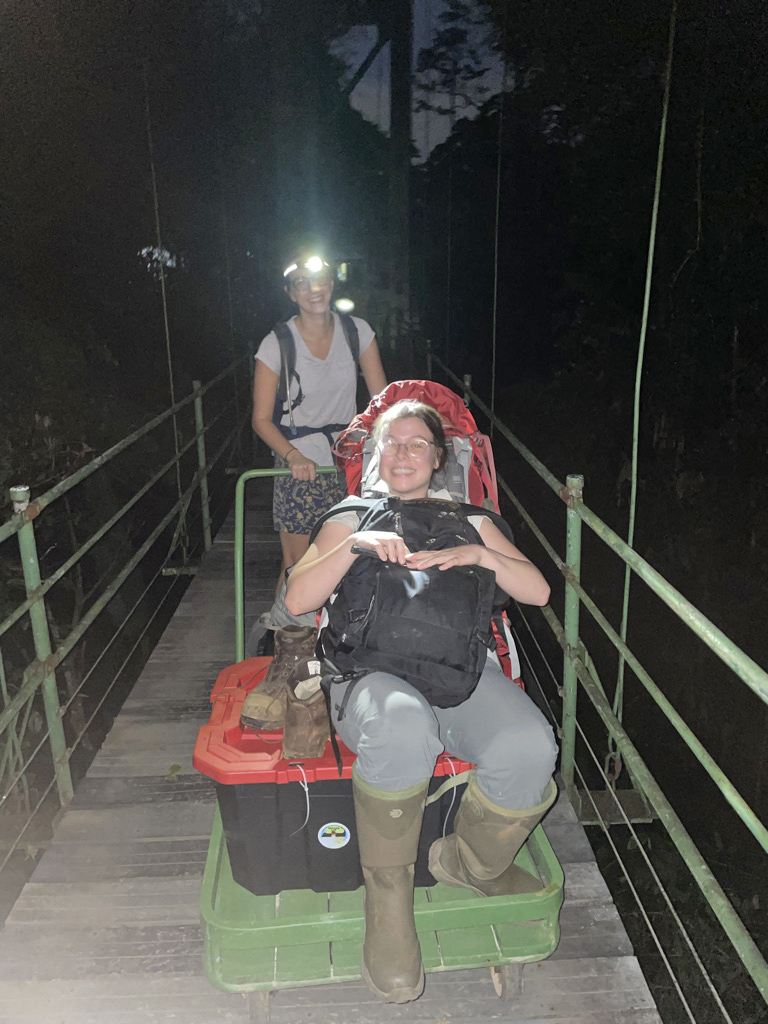The Ben Taylor Lab explores tropical forests and their future in the era of global change
One day last November, as the sun rose just after 6:00 a.m. on the flanks of the Rincón de la Vieja volcano in Costa Rica, four members of the Arnold Arboretum’s Taylor Lab packed the day’s field gear and pulled on their snake boots amid the rising chorus of birds and farm animals greeting the day. PhD student Carina Berlingeri, Post-doctoral researchers Ceci Prada and Lindsay McCulloch, and Assistant Professor Ben Taylor were embarking on an exploratory journey to Costa Rica to set the groundwork for two large-scale projects examining the impacts of forest disturbance and elevated carbon dioxide (CO2) on tropical forests.

Fully two thirds of Earth’s plant biomass is stored in tropical forests, yet we know shockingly little about how these global hotspots of biodiversity will respond to various aspects of global change, from increasing disturbance and species extinctions to rising levels of CO2. To better understand how tropical forests will respond to our changing world, our team needed to find sites where forests are exposed to conditions that simulate global change so that testing could occur in real time―a quest that led them, perhaps surprisingly, to the flanks of a Costa Rican volcano.

As CO2, a potent greenhouse gas, continues to accumulate in our atmosphere, the pace of global warming may depend on how much of it can be captured and stored by forests—particularly highly productive tropical rainforests. Trees may grow larger and capture more carbon when exposed to rising CO2, but other factors such as water or nutrient limitation may inhibit this “CO2 fertilization” effect.
To determine the potential for CO2 fertilization in tropical forests, Ceci led an expedition to find cracks in the volcanic bedrock (vents) that allow large amounts of volcanically produced CO2 to percolate up through the soil and fumigate the surrounding forest. Her reconnaissance team spent their days traversing the flanks of the volcano searching for vents and relying on Lindsay’s impeccable aim with a 7-foot sling shot to install CO2 sensors 40 feet high in the forest canopy. Ceci will use the data from these sensors to identify areas of the forest that are exposed to elevated levels of CO2. Comparing growth rates of these forests to neighboring sites not exposed to elevated CO2 will provide a window to how tropical forests will operate in the future when comparable conditions will be the norm.

With this CO2 data in hand, our team traveled east across the country to the lush lowland tropical forests of La Selva Biological Station to assess how forests respond to a different aspect of global change: increased disturbance. Increases in tree mortality and severe storms driven by global change lead to tree falls that create gaps in the forest canopy. As these canopy gaps increase in frequency and size, their recovery becomes increasingly important to the overall function of the forest. So our team, now led by Lindsay, set off in search of these gaps―large and small, young and old―to investigate how plants and microbes restore nutrient cycling to promote forest regeneration when canopy gaps form. As howler monkeys foraged in the canopy above, Lindsay, Carina, Ceci, and Ben measured dimensions of the gap opening and compiled data on the soil and vegetation found below―all while steering clear of bullet ants, which boast the most painful insect sting in the world!

Together, the projects that our team launched in Costa Rica will help scientists predict the future capacity of tropical forests to capture carbon and harbor biodiversity in the face of a changing climate and increasing disturbance. In field-based science like this, the logistical side of research often impacts the questions we ask and the ways in which we answer them. This makes scouting field sites to test methods, troubleshoot instruments, and set safety protocols absolutely critical to the success of any research project in tropical forests―a process made easier with a team characterized by open minds, good senses of humor, and a surplus of insect repellent. Armed with the groundwork and experience of our scouting trip, Lindsay and Ceci have since returned to Costa Rica to continue field investigations on their respective projects. We all look forward to learning more about what the future holds for these rich and beautiful ecosystems, and sharing what we learn with the Arboretum community and the world.

